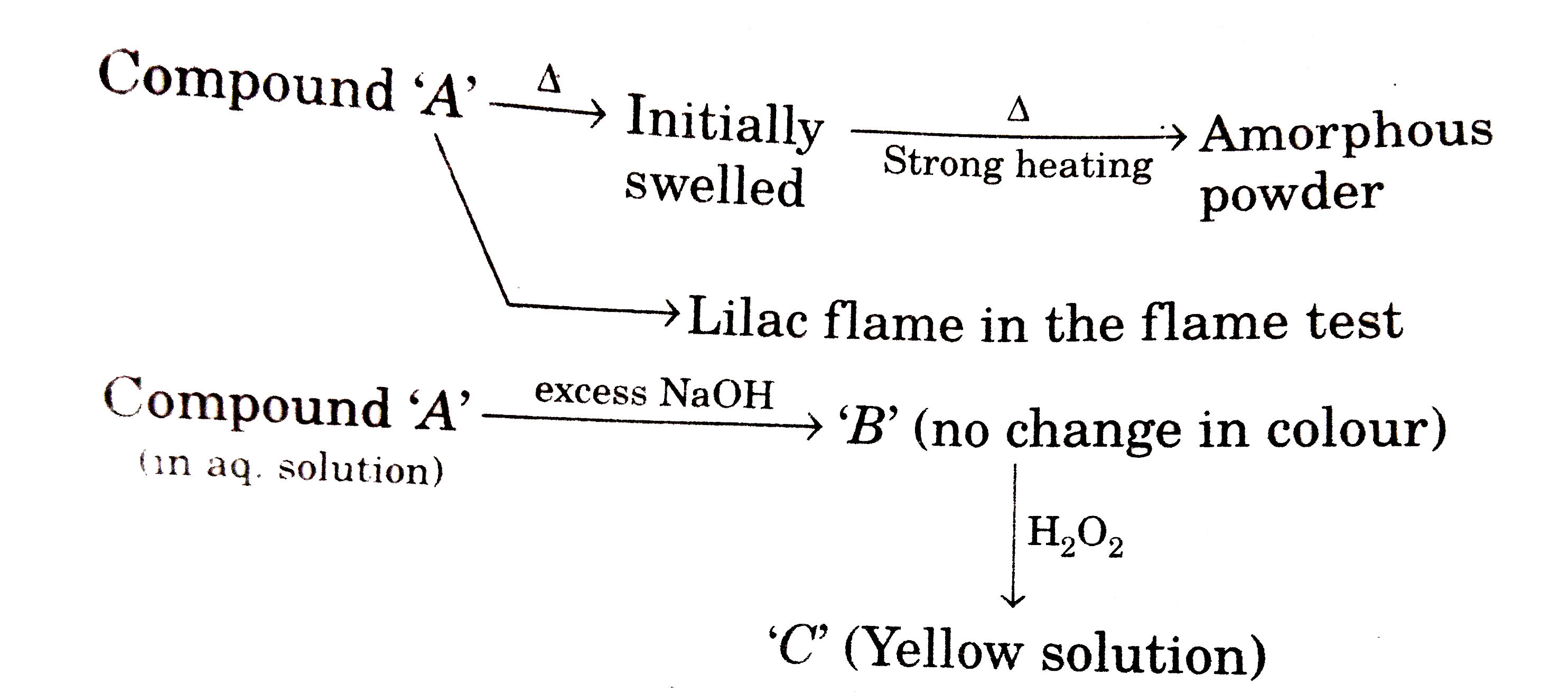Assertion (A) : Bismuth forms only one well characterised compound in +5 oxidation state.
Reason (R) : Elements of group-15 form compounds in +5 oxidation state.
Both A and R are true and R is the correct explanation of A
Both A and R are true but R is NOT the correct explanation of A
A is true but R is false
A is false and R is True.
The correct Answer is:B
To analyze the given assertion and reason, we will break down the concepts involved step by step.
Step 1: Understanding the Assertion
The assertion states that "Bismuth forms only one well-characterized compound in +5 oxidation state."
- Explanation: Bismuth (Bi) is a group 15 element. While it can theoretically exhibit a +5 oxidation state, it is not very stable. In fact, bismuth predominantly exists in the +3 oxidation state in most of its compounds. The only well-characterized compound of bismuth in the +5 state is bismuth pentoxide (Bi2O5).
Step 2: Understanding the Reason
The reason states that "Elements of group-15 form compounds in +5 oxidation state."
- Explanation: Group 15 elements, which include nitrogen (N), phosphorus (P), arsenic (As), antimony (Sb), and bismuth (Bi), can indeed exhibit +5 oxidation states. For example, nitrogen can form compounds like N2O5, phosphorus can form PCl5, and so on. However, the stability of the +5 oxidation state varies among these elements.
Step 3: Analyzing the Relationship Between Assertion and Reason
Now we need to evaluate whether the reason supports the assertion.
- Analysis: While it is true that group 15 elements can form +5 oxidation state compounds, the assertion specifically about bismuth is that it forms only one well-characterized compound in this state. The reason does not negate the assertion but rather provides context. The inert pair effect explains why bismuth prefers to exist in the +3 state rather than the +5 state, which is a crucial point in understanding the assertion.
Step 4: Conclusion
Based on the analysis:
- The assertion is true: Bismuth does form only one well-characterized compound in the +5 oxidation state.
- The reason is also true: Group 15 elements can form compounds in the +5 oxidation state.
- However, the reason does not directly support the assertion about bismuth specifically.
Thus, the correct conclusion is that both the assertion and reason are true, but the reason does not provide a valid explanation for the assertion.
Final Answer
- Assertion (A): True
- Reason (R): True
- Conclusion: The reason does not explain the assertion.
The assertion states that "Bismuth forms only one well-characterized compound in +5 oxidation state."
The reason states that "Elements of group-15 form compounds in +5 oxidation state."
Now we need to evaluate whether the reason supports the assertion.
Based on the analysis:
- The reason is also true: Group 15 elements can form compounds in the +5 oxidation state.
- However, the reason does not directly support the assertion about bismuth specifically.
- Assertion (A): True
- Reason (R): True
- Conclusion: The reason does not explain the assertion.
Similar Questions
Knowledge Check
Oxidation state of zero group elements is
A−1B+1C0D−2
The compound 'B' is having oxidation state of:AzeroBIICIIIDIVThe compound with the lowest oxidation state of iron is:
AFe2OBCr2+CTi4+DMn2+
Why + 3 oxidation state is stable in heavier element of group 15?
View SolutionName the group 13 element which forms most stable compounds in +1 oxidation state.
View SolutionIdentify the metal that froms colourless compounds.
View SolutionElements of group 15 form compounds in +5 oxidatin state. However, bismuth forms only one well characterised compound in +5 oxidation state. The compound is
View SolutionAssertion (A) : Bismuth compounds are stable +V oxidation state than in +III oxidation state
Reason (R) : Inert pair effect is observed Bismuth compounds
View Solution
